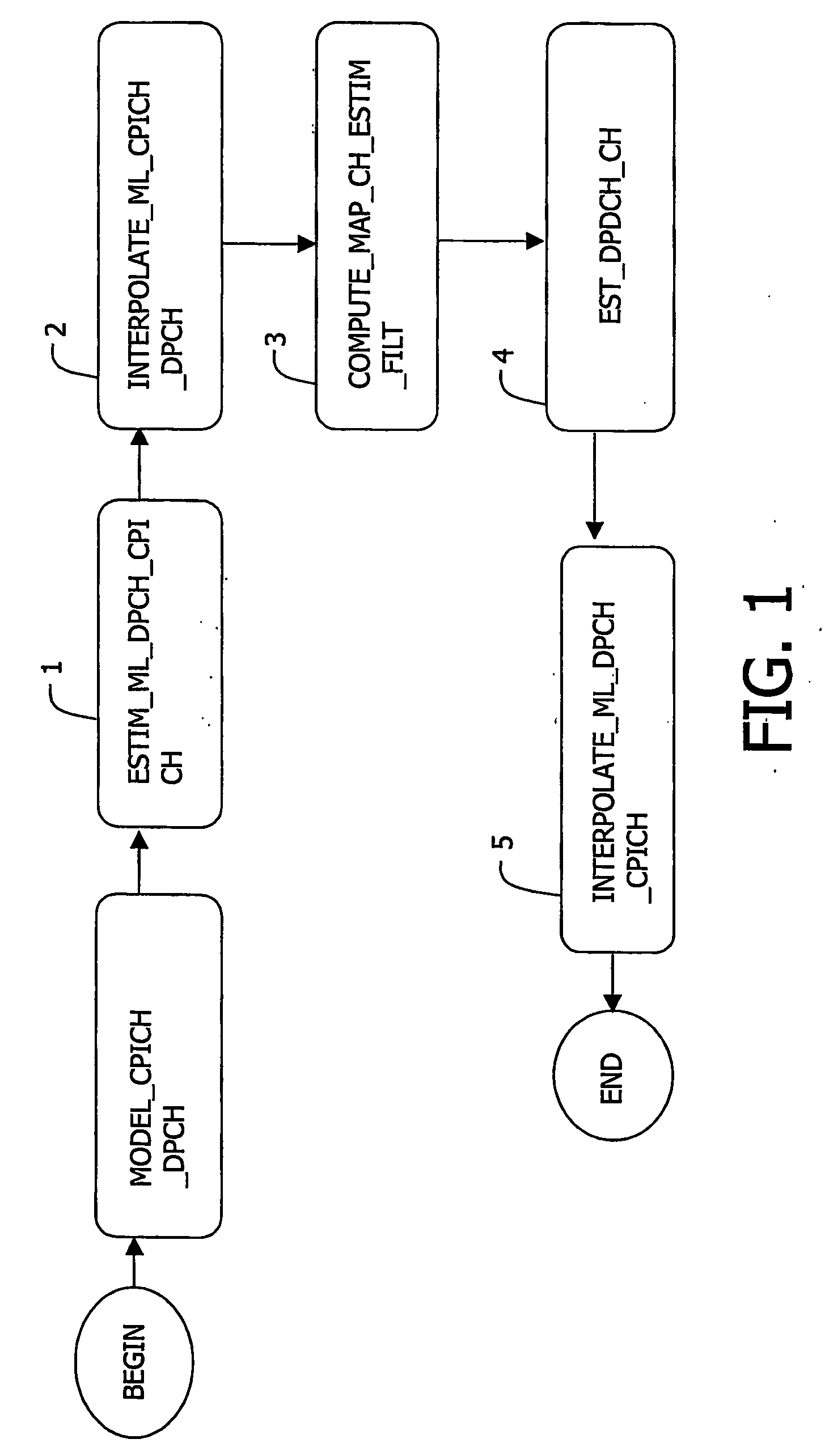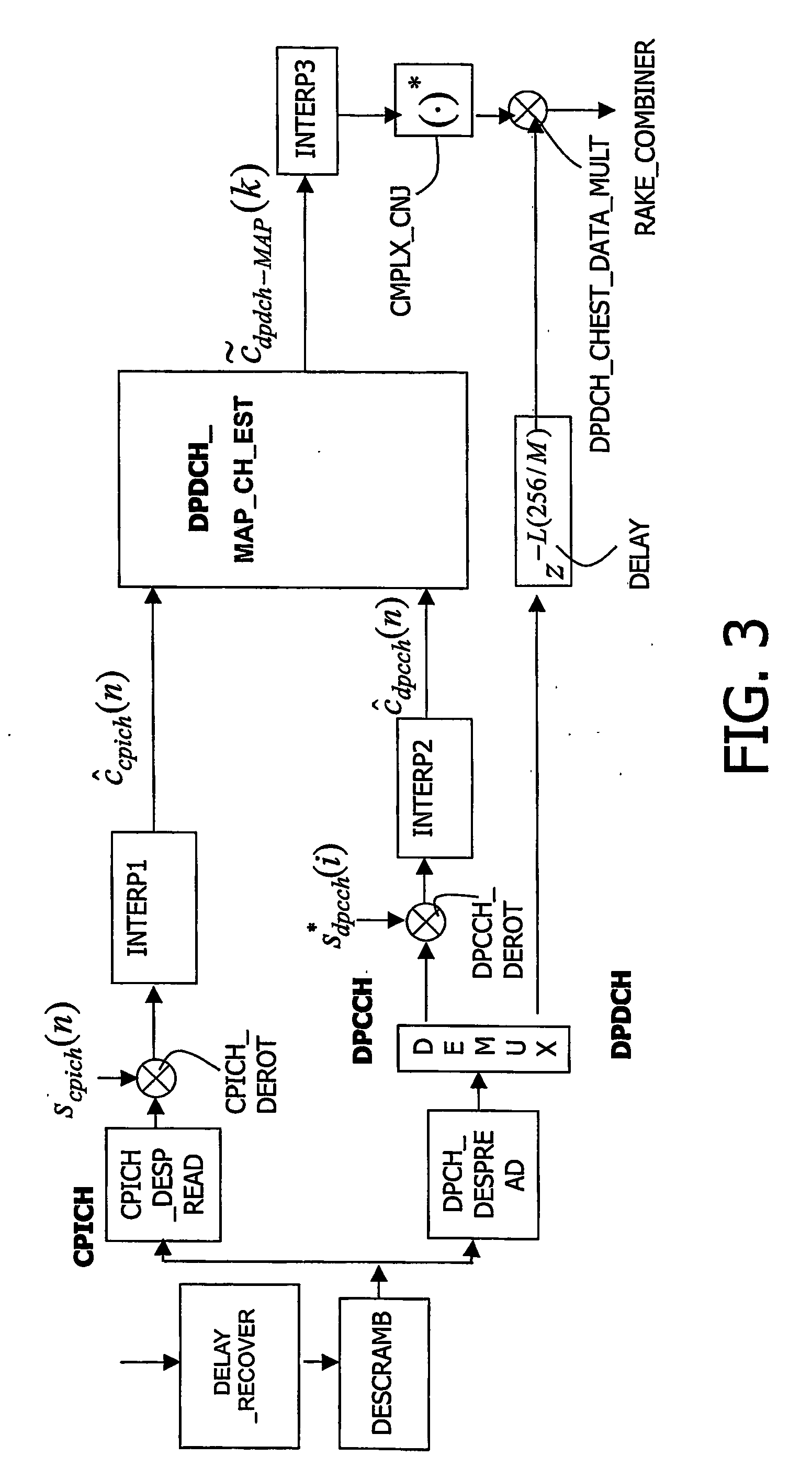Methods for channel estimation in the presence of transmit beamforming
a beamforming and channel technology, applied in the field of channel estimation in the presence of transmit beamforming, can solve the problems that estimates cannot be directly applied as channel estimations for dpch channels, and are not suitable for logical channel cpich transmission, and achieve the effect of saving computation
- Summary
- Abstract
- Description
- Claims
- Application Information
AI Technical Summary
Benefits of technology
Problems solved by technology
Method used
Image
Examples
Embodiment Construction
1. Introduction
[0019] In the following description, functions or constructions well-known to a person of ordinary skill in the art are not described in detail since they would unnecessarily obscure the invention.
[0020] The present invention relates to a method and embodiments for the estimation of the propagation channel in a communication system when information data are transmitted through a beamforming system. Said methods are particularly suitable for implementation in a RAKE receiver within the LTMTS standard when information data are transmitted from a base station BS to user equipment UE, here a mobile phone.
[0021] The UMTS standard provides two logical channels for the downlink communication: a first channel denoted common pilot channel (CPICH) consisting of a continuous sequence of known pilot symbols and a second logical channel denoted dedicatedphysical channel (DPCH). Said second logical channel DPCH consists of a first logical sub-channel denoted dedicated physical ...
PUM
 Login to View More
Login to View More Abstract
Description
Claims
Application Information
 Login to View More
Login to View More - R&D
- Intellectual Property
- Life Sciences
- Materials
- Tech Scout
- Unparalleled Data Quality
- Higher Quality Content
- 60% Fewer Hallucinations
Browse by: Latest US Patents, China's latest patents, Technical Efficacy Thesaurus, Application Domain, Technology Topic, Popular Technical Reports.
© 2025 PatSnap. All rights reserved.Legal|Privacy policy|Modern Slavery Act Transparency Statement|Sitemap|About US| Contact US: help@patsnap.com



